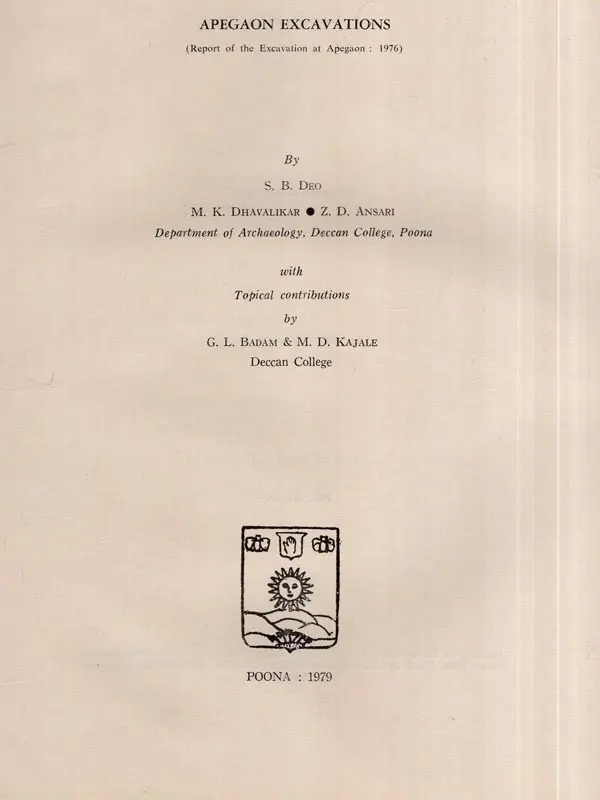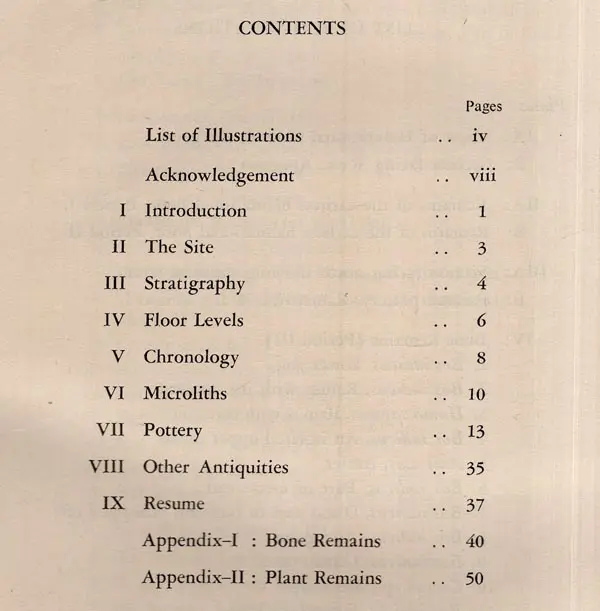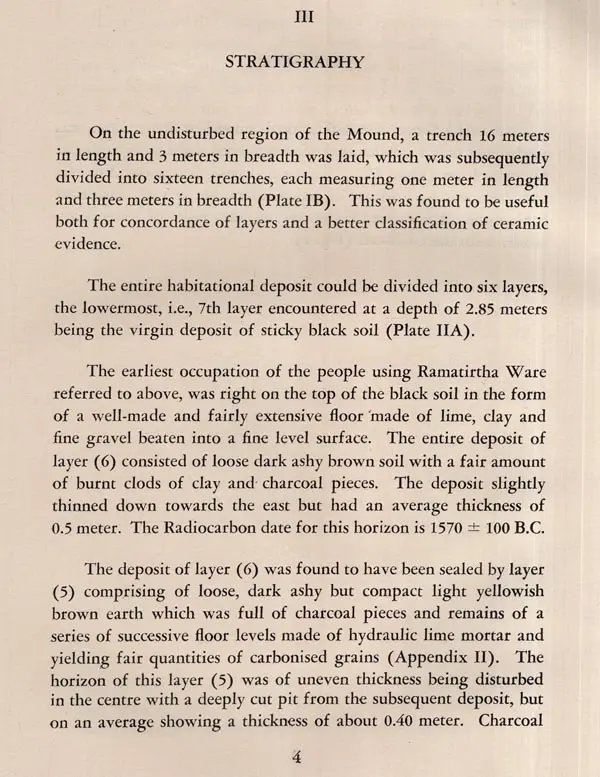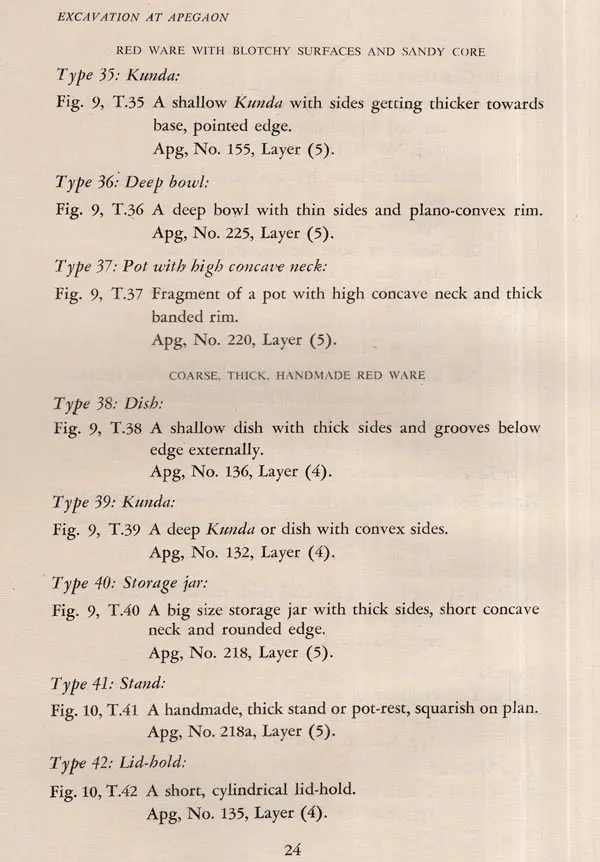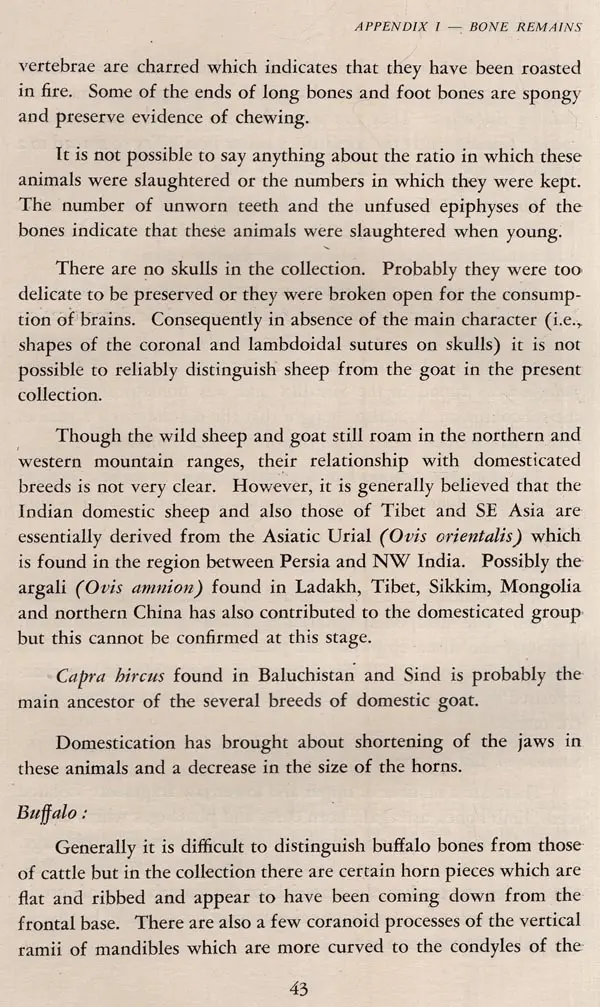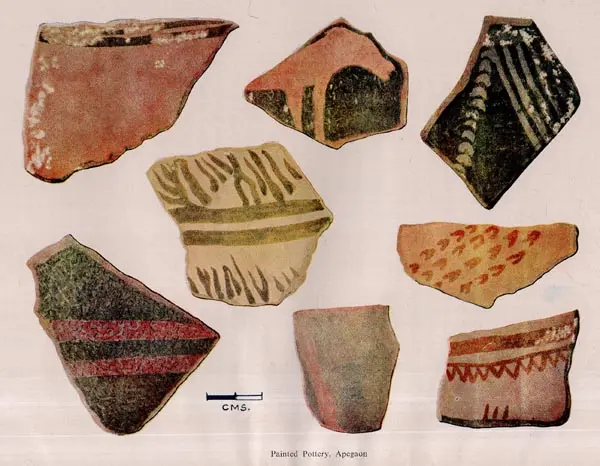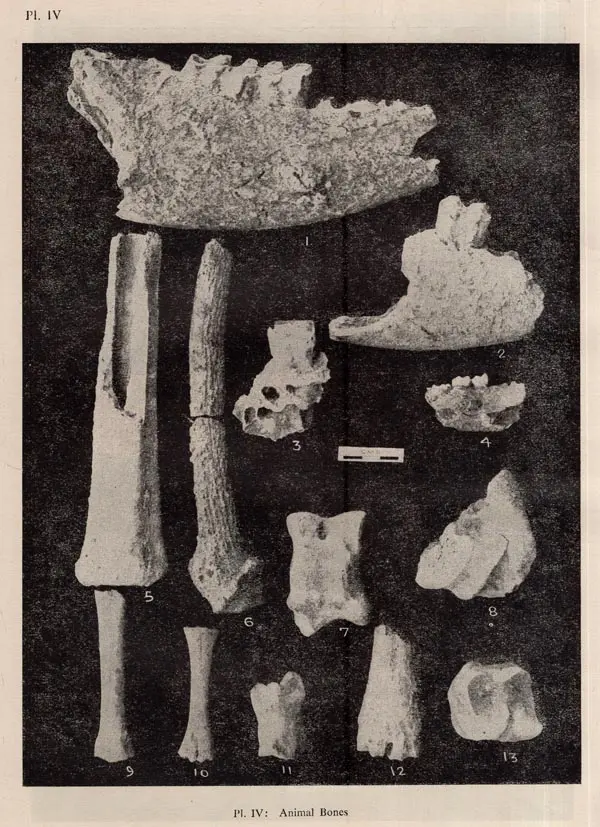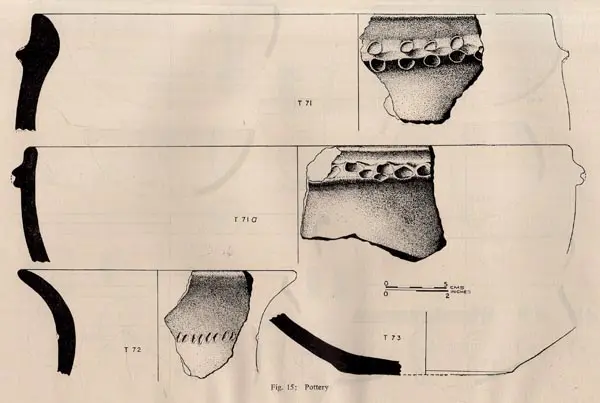
Apegaon Excavations (Report of the Excavation at Apegaon : 1976 An Old and Rare Book)
Book Specification
| Item Code: | UBE936 |
| Author: | Shantaram Bhalchandra Deo and Madhukar Keshav Dhavalikar |
| Publisher: | Deccan College Postgraduate and Research Institute |
| Language: | English |
| Edition: | 1979 |
| Pages: | 92 (Color Illustrations) |
| Cover: | PAPERBACK |
| Other Details | 11.00 X 8.50 inch |
| Weight | 280 gm |
Book Description
Apegaon (19,36'30"; 75,29'30") lies at a distance of 16 kms to the southeast of Paithan (ancient Pratishthana), in the Taluka of Paithan which forms part of the District of Aurangabad in the State of Maharashtra. It is situated on the left bank of river Godavari.
About a kilometer to the west of Apegaon, at the confluence of a small rivulet Virabhadra with the Godavari, is an area designated as Ramatirtha which has a small habitational mound about a hundred metres in length and seventy metres in breadth. This deposit has been eroded at several places with the result that the area available for proper excavation was limited in nature.
Early in 1976, the Prehistory Section of the Department of Archaeology, Deccan College, in their explorations of the Paithan region, reported the find of a small habitational mound and brought to Poona surface collection of pottery strewn over the mound. This collection was interesting inasmuch as it contained besides the wellknown Malwa and Jorwe fabrics, Black-and-Red of protohistoric tradition as also a very distinctive drab Red Ware with crackled surfaces and painting in black or ochre red or dull white. Apparently the colour of the painting was the resultant of uneven firing displaying blotchy surface.
Apart from this distinctive ware, two other factors were significant. First was that this pottery was associated with a reasonably good collection of microliths normally found with the painted pottery of Central Indian and Deccan Chalcolithic cultures. Secondly, very few Chalcolithic sites from the Marathwada region of Maharashtra have been reported so far, Kausan' near Paithan and Badnapur near Aurangabad being the relatively better known.
It was against this background that the excavations at Apegaon Ramatirtha were planned. These were essentially of a limited nature as they were principally undertaken to know the stratigraphic sequence of ceramic industries at Apegaon itself which could possibly be valid for wider application to Marathwada region and for comparative studies with other Chalcolithic ceramics known from the rest of the river valleys of Maharashtra.
**Contents and Sample Pages**
